1830–1903
Camille Pissarro
Pissarro was the oldest of the group of Impressionist painters. He exhibited at all eight legendary Impressionist Exhibitions and came to play the role of a kind of artistic father figure to among others Gauguin. A central feature of his painting is the very consistent exploration of what could be called a classic Impressionism, only interrupted by a period at the end of the 1880s when he joined the Pointillists for a while.
Motifs: Landscapes and garden pictures, pictures of rural workers, city pictures and portraits.
Oil on canvas
60 x 73 cm
1894
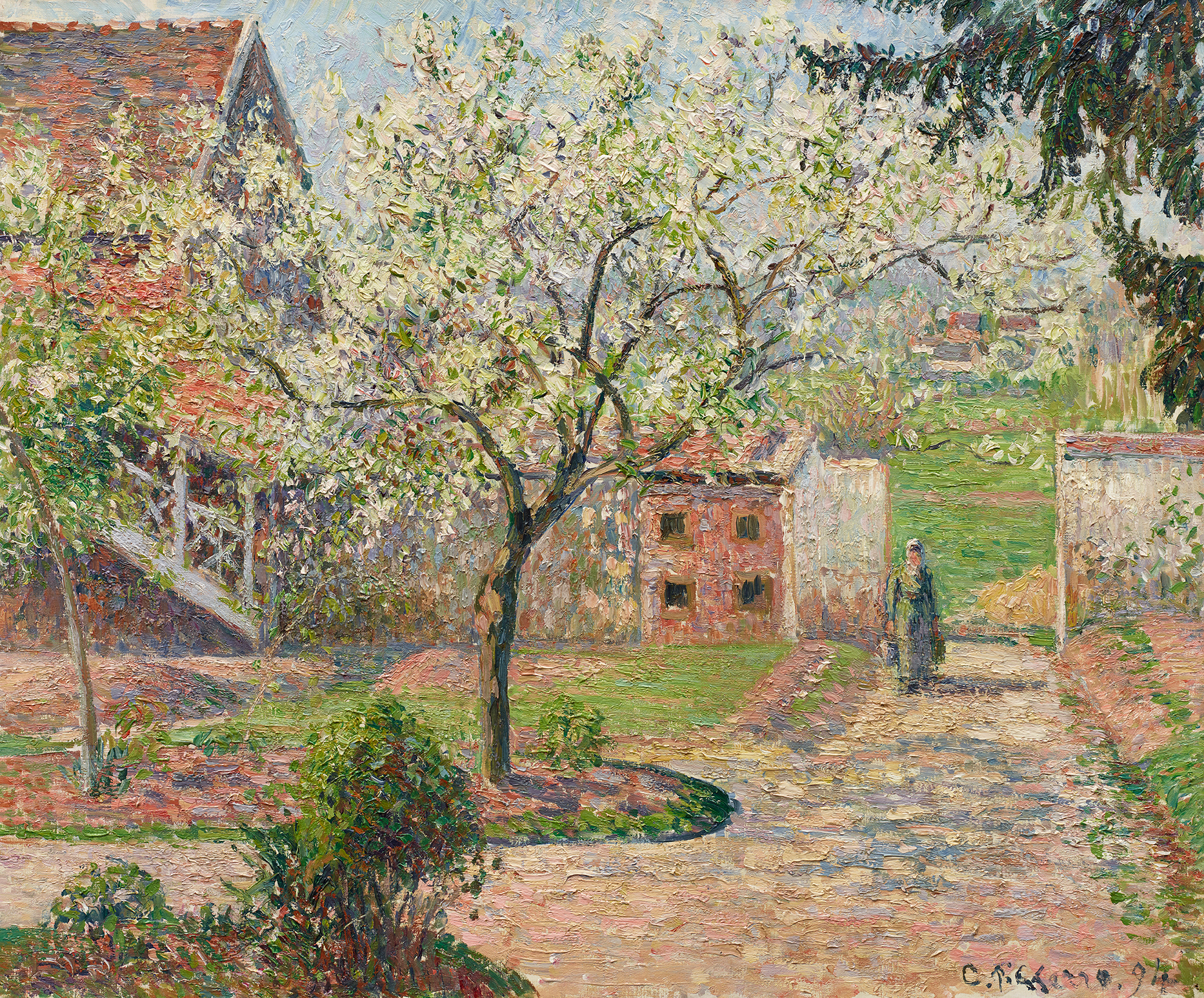
Olie på lærred
60 x 73 cm
1894
Plum Trees in Blossom, Éragny
Pissarro mainly dealt with the close outdoor surroundings. He was interested in showing everyday life around the family’s house, in the village or in the fields. His paintings are often picturesque in a way partly inspired by Corot and Millet.
In 1884 Pissarro and his family moved to Éragny, north-west of Paris. This motif is from the garden of the house there, and shows it bathed in a shimmering spring light. The concentration is on the play of light in the flowering fruit trees, and Pissarro has fully exploited the impact of the Impressionistic techniques.
Oil on canvas
65,6 x 54 cm
1898
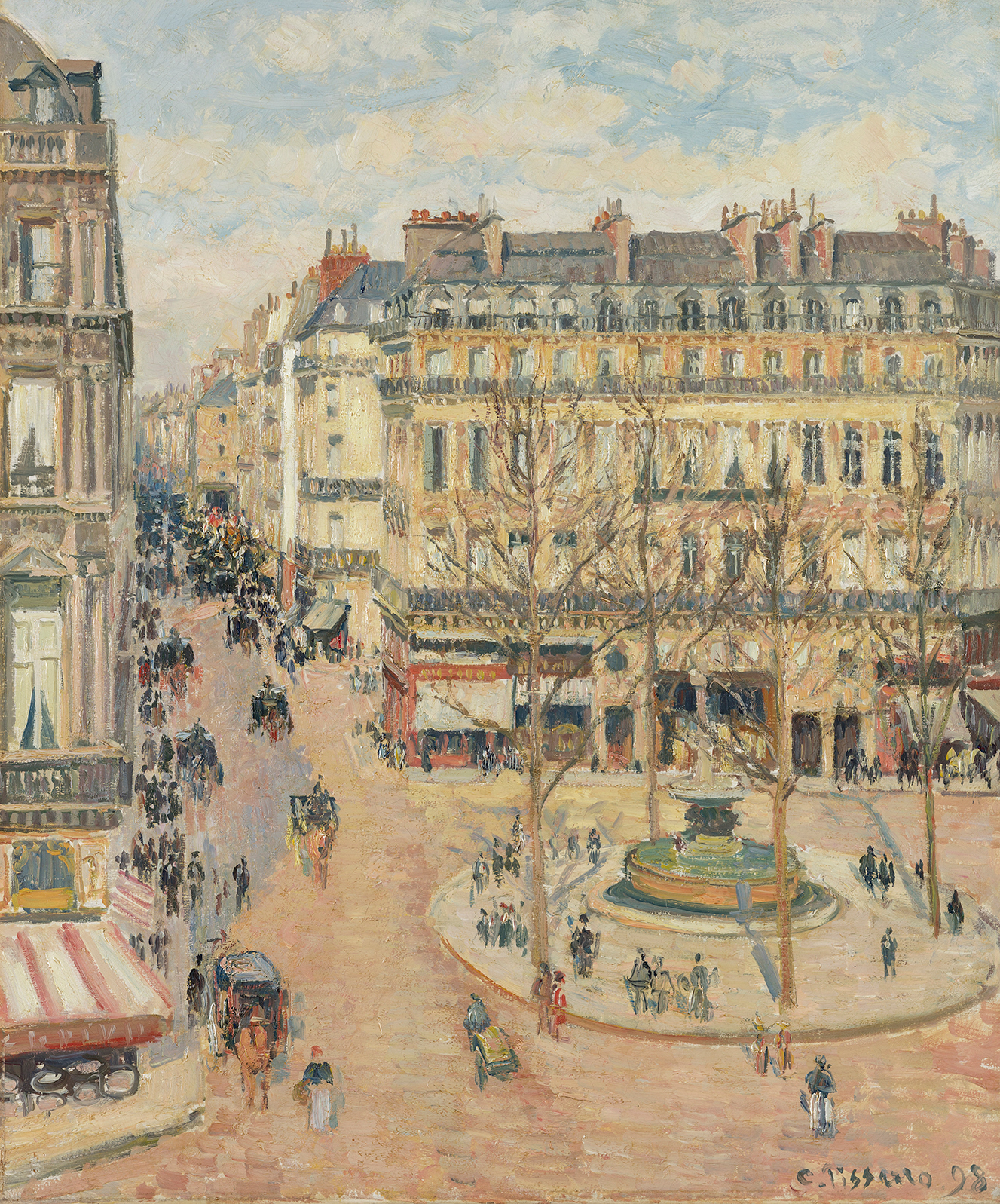
Oil on canvas
65.5 x 54 cm
1898
Morning Sun in the Rue Saint-Honoré. Place du Théâtre Français
During the last ten years of his life Pissarro painted many city motifs. For example he rented hotel rooms around Paris and worked to paint the motifs seen from up in the building where he was staying. He painted the same streets and squares from different vantage points, at different times of the day, and in different weather conditions. The picture can be seen in the light of a then new tendency in the art of painting launched by the Impressionists: one repeated one’s motif in long series to explore their manifold possibilities.
Pissarro’s pictures of this type are both naturalistic and experimental. The drawing underlying the composition carefully reproduces views as they looked to the painter at a particular time. At the same time the Impressionistic way of painting showed an anonymous swarm of people, houses, carriages and trees, appearing as blobs. In the left of the picture the horizon is closed and the observer is made aware of the flatness of the picture. When one looks at the pictures this way, the individual blobs are very striking, bordering on the abstract.
Oil on canvas
37 x 30 cm
1852-55
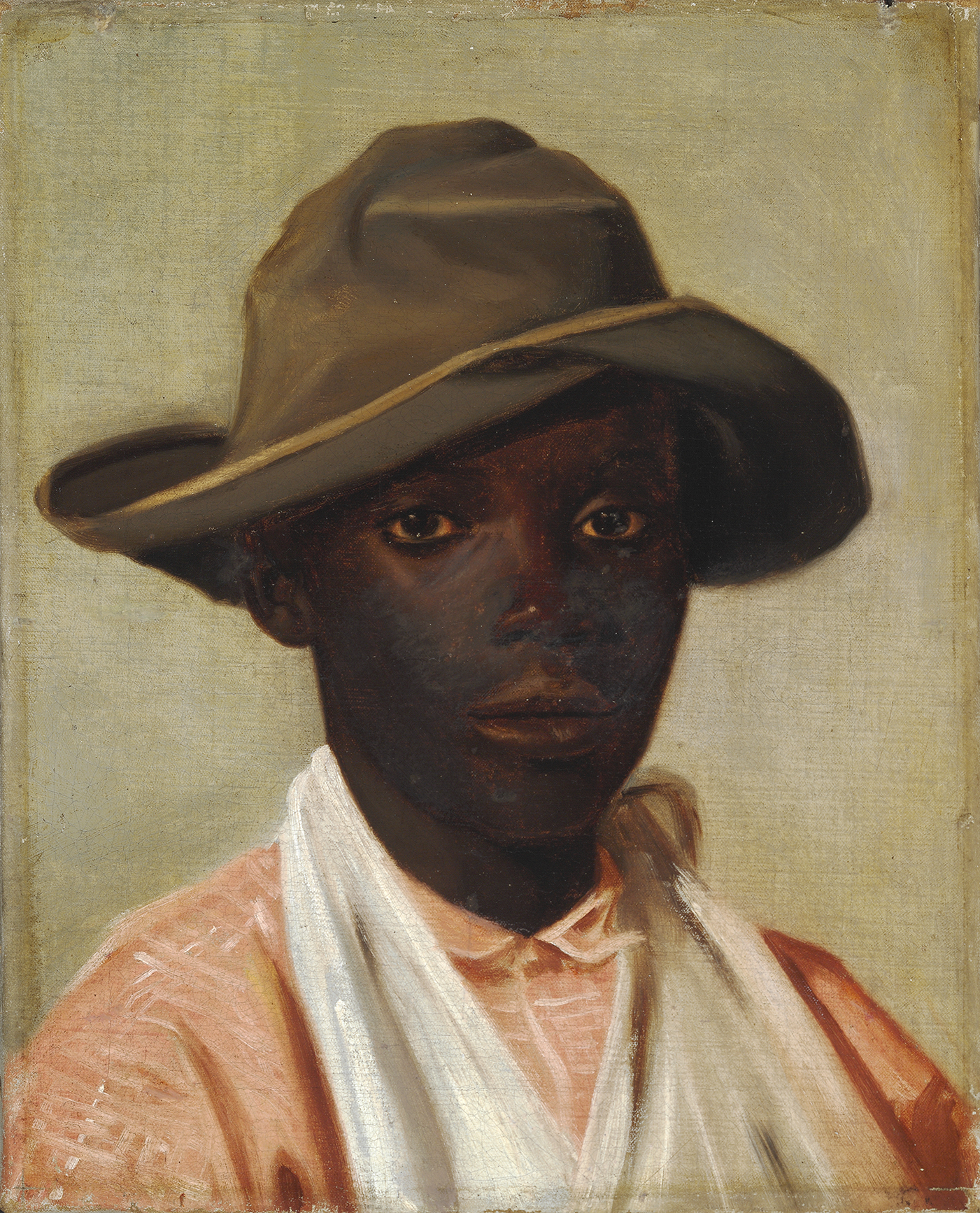
Olie på lærred
65,5 x 54 cm
1898
Portrait of a Boy
Olie på pap
21.8 x 16 cm
1856
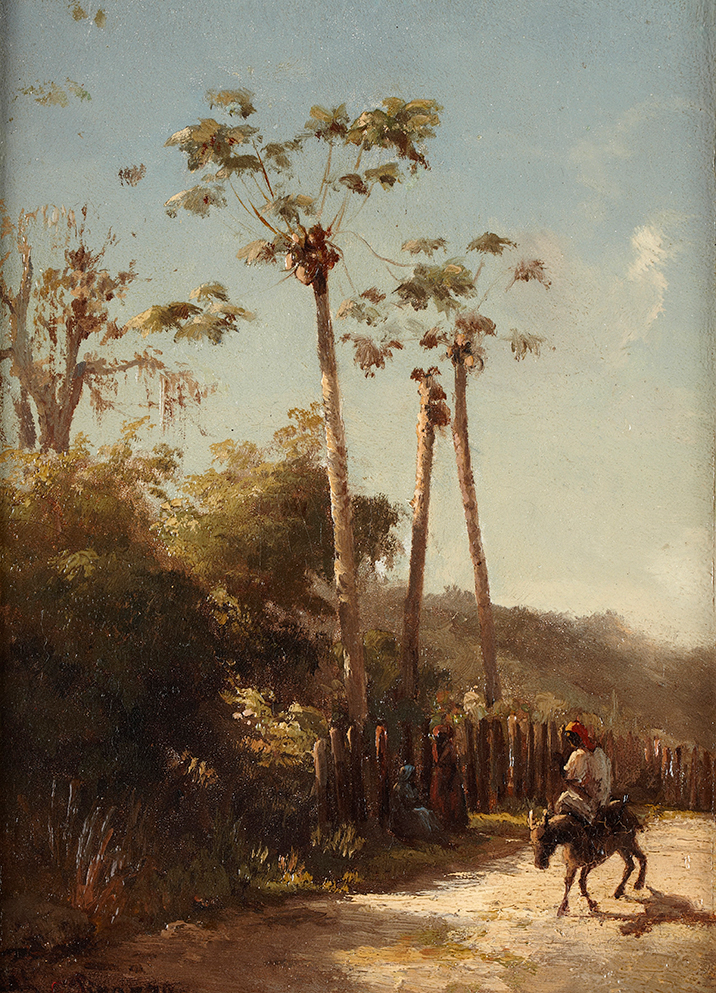
Olie på pap
21,8 x 16 cm
1856
Landscape from the Antilles, Rider and Donkey on a Road
54 x 65 cm
1876
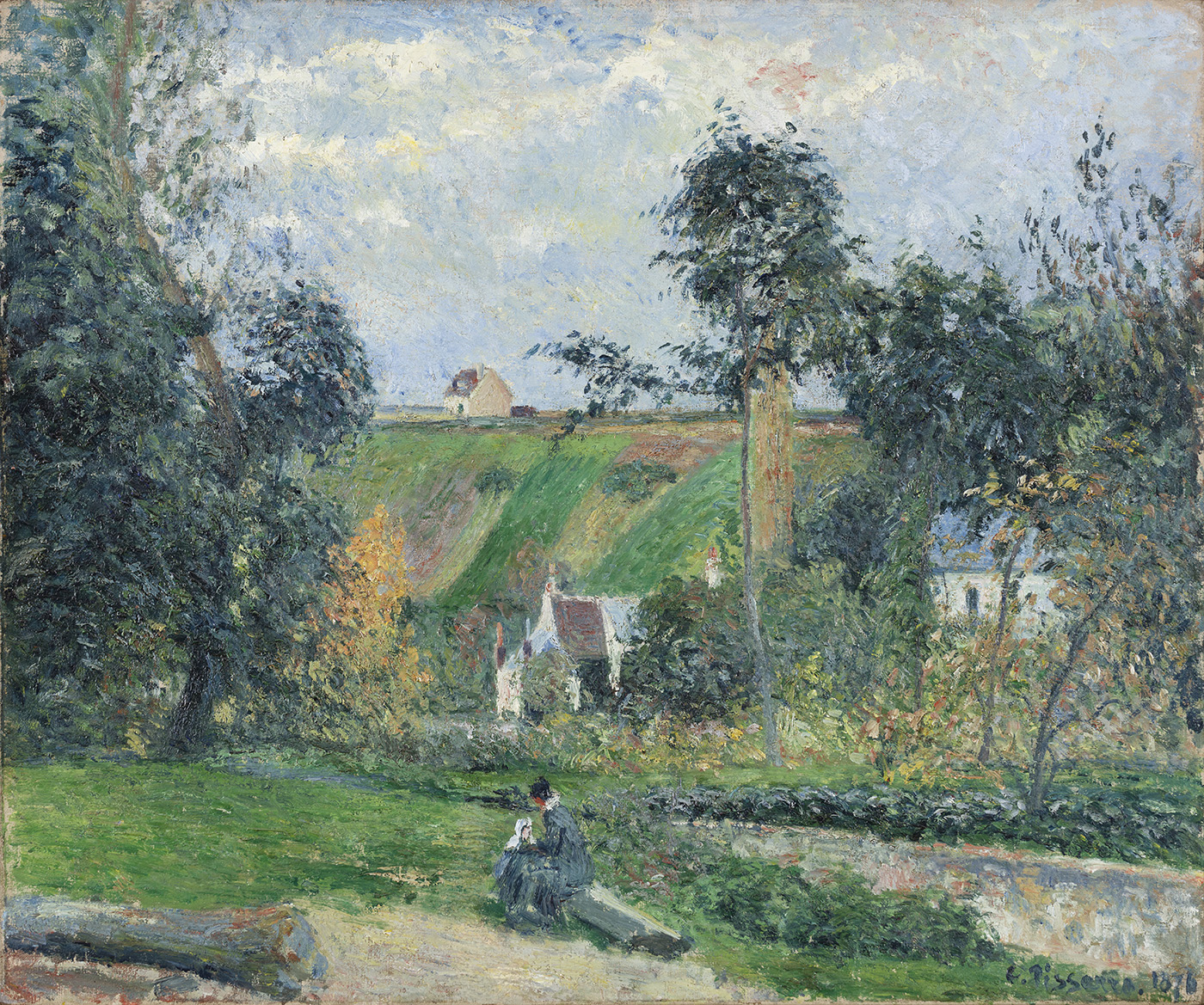
XX
54 x 65 cm
1876
By St. Anthony’s Brook, the Hermitage, Pontoise
XX
54.5 x 65 cm
1894
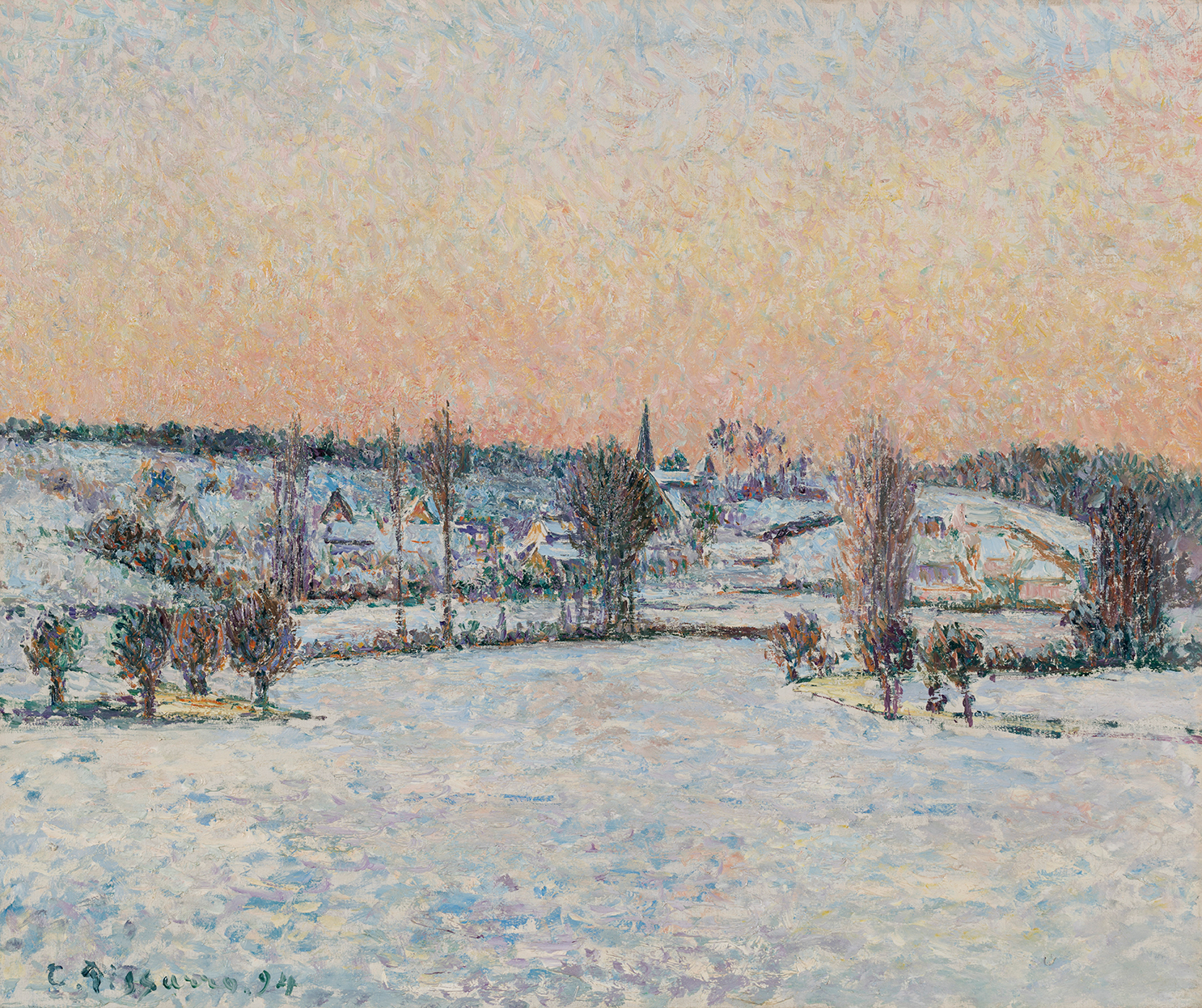
Olie på lærred
65,5 x 54 cm
1898
Snowy Landscape, Éragny, Evening
65.5 x 81 cm
1897

XX
65,5 x 81 cm
1897
A Corner in the Garden, Éragny (The Painter’s Home)
Pen and pencil on paper
124 x 160 mm
ca. 1854

Pen og blyant på papir
124 x 160 mm
ca. 1854
Skt. Thomas.
35 x 27 cm
1897
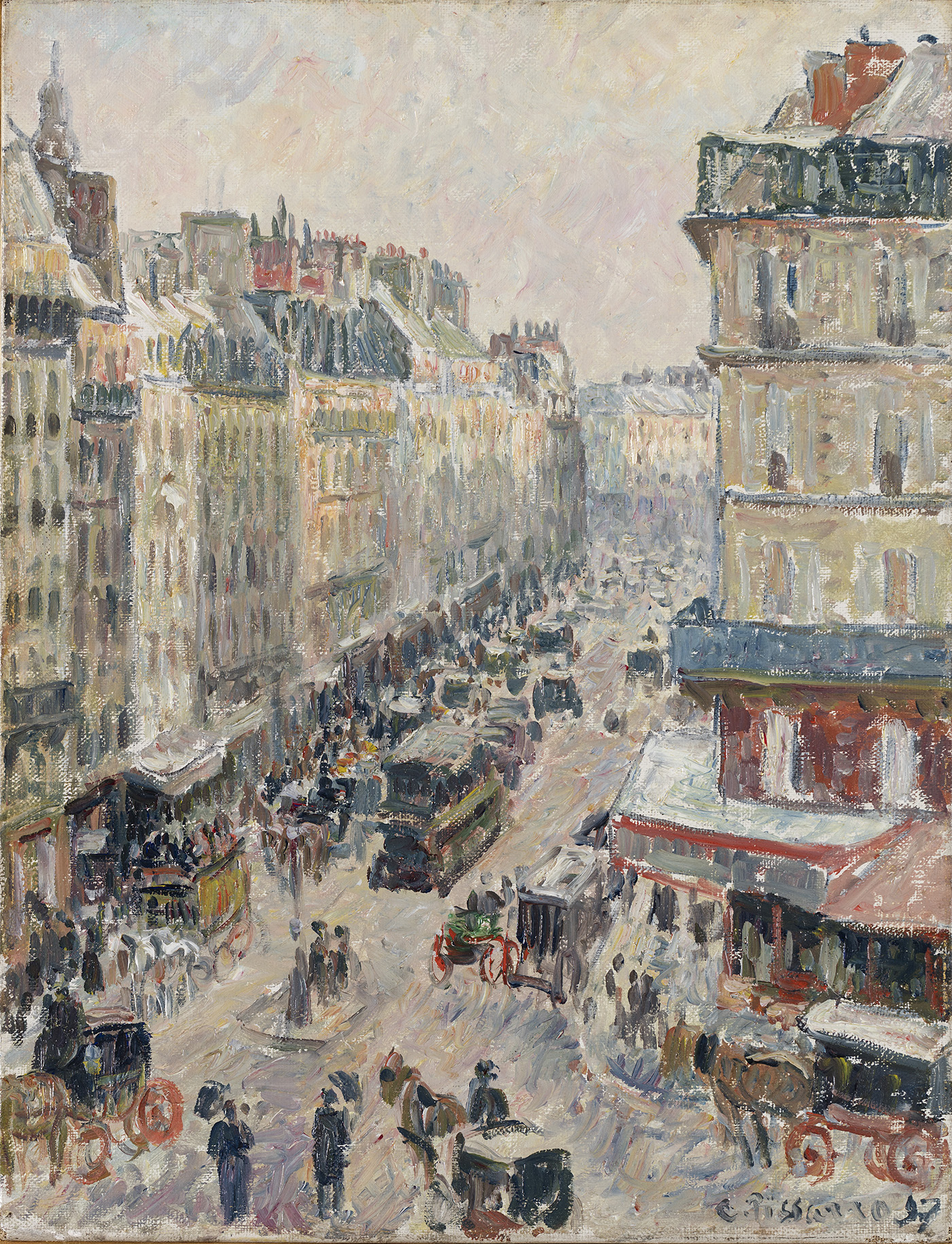
XX
35 x 27 cm
1897
Rue Saint-Lazare, Paris
PRINTS
Etching
197 x 134 mm
1890, posthumous reprint 1906
Twelfth state of twelve
Print/edition: unknown
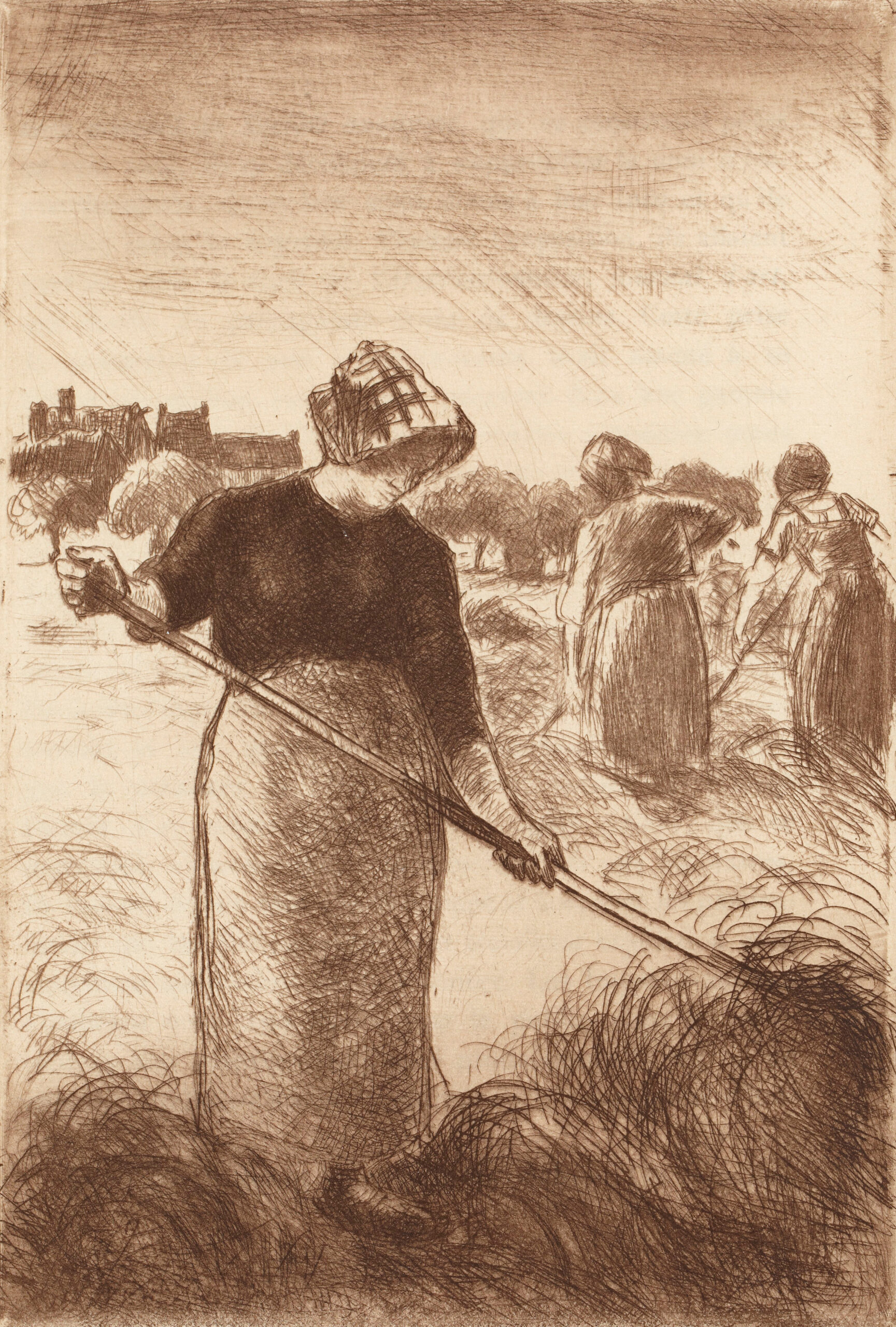
XX
35 x 27 cm
1897